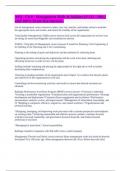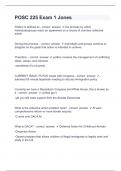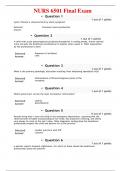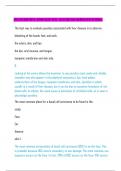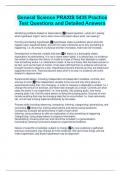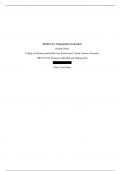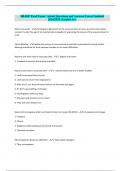Exam (elaborations)
ASQ - Ch 8 - Management Skills & Abilities (P 132 - 198) || with 100% Error-free Answers.
- Module
- Institution
role of management correct answers to plan, carry out, monitor, and initiate action to maintain the appropriate focus and results, and ensure the viability of the organization Total Quality Management (TQM) correct answers look across the organization to see how you are doing; be more knowledgea...
[Show more]
